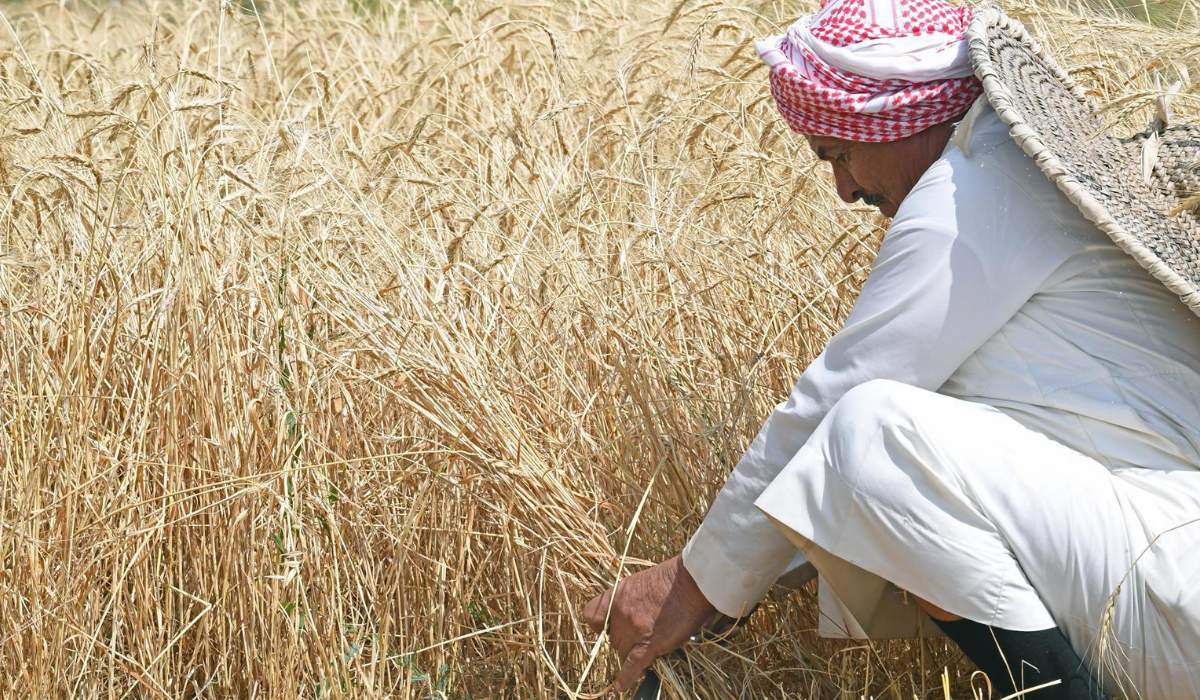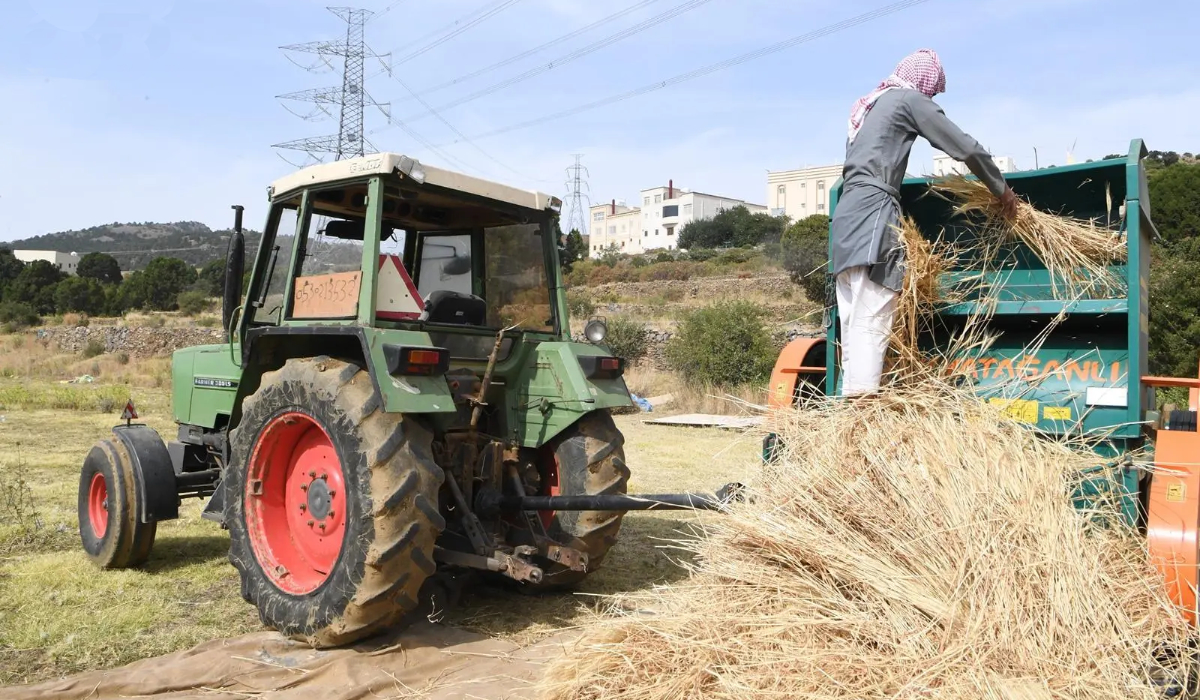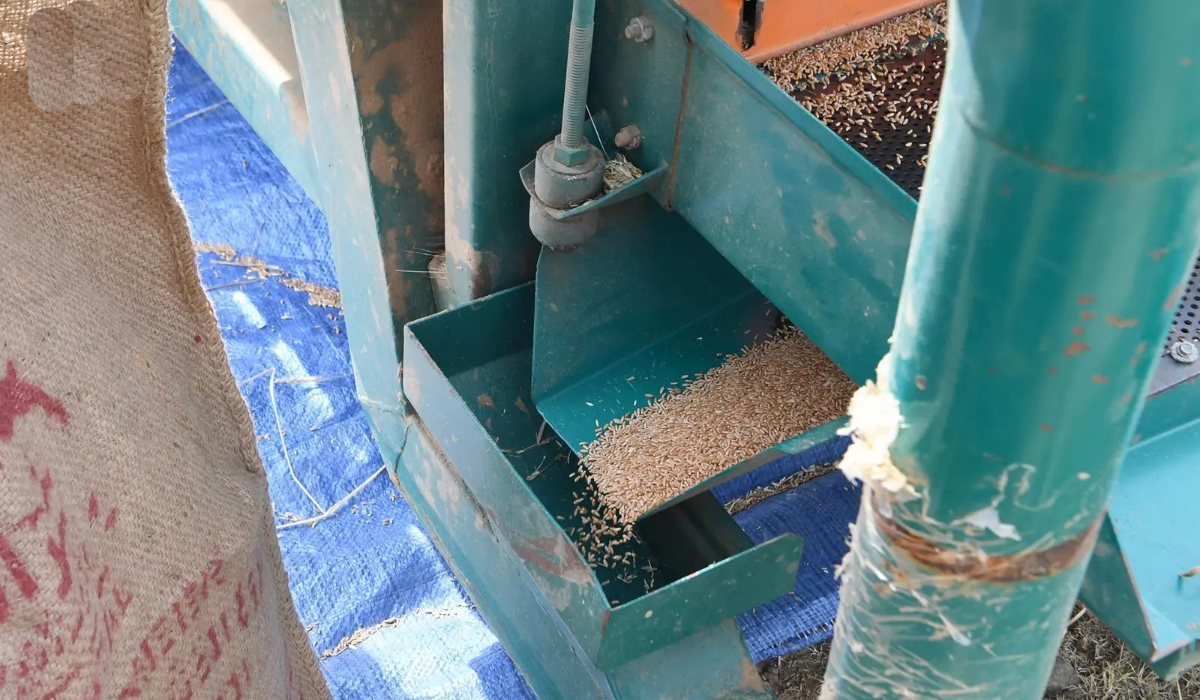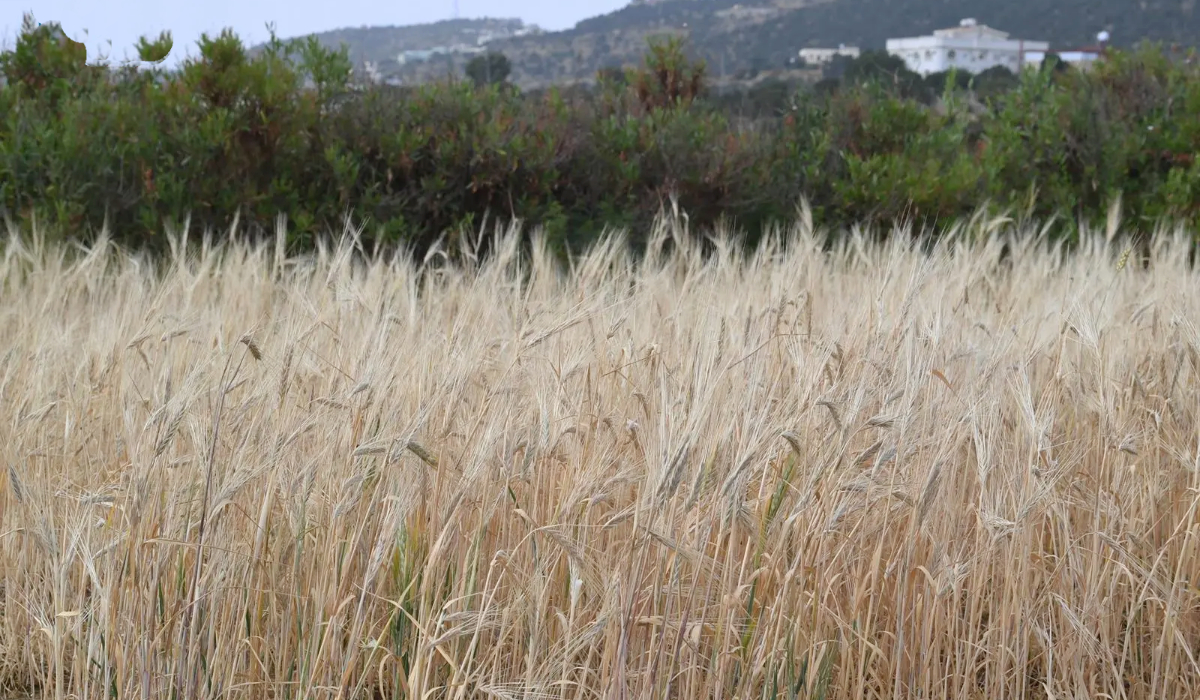RIYADH: As the summer rains loom, farmers in Saudi Arabia’s Sarawat Mountains of Asir are in a race against time to bring in their wheat harvest.
This year’s crop is notable for both its abundance and superior quality, the Saudi Press Agency reported recently.
The wheat-cultivation cycle in Asir, which begins in February and spans five to six months, culminates in the traditional harvest known as Al-Sareem.

The wheat cultivation cycle in Asir, which begins in February and spans five to six months, culminates in the traditional harvest known as Al-Sareem. (SPA)
While some farmers still employ time-honored harvesting methods using sickles, many have embraced modern machinery, including large harvesters and handheld devices.
“Our terraced fields yield a variety of grains,” Issa Al-Waymani, a local farmer, told the SPA. “Besides different wheat varieties, we also grow barley and white and yellow corn.”
He highlighted the diverse grain production of Asir’s terraces. The region’s various types of wheat include Al-Seeb, Al-Mabia, Al-Qiyad and Al-Sumeira.

The wheat cultivation cycle in Asir, which begins in February and spans five to six months, culminates in the traditional harvest known as Al-Sareem. (SPA)
“We know it is time to harvest when the ears turn yellow and reach full maturity,” Al-Waymani said regarding the wheat-harvesting process. After harvesting, the crops are transported to designated threshing areas known locally as Al-Jareen.
Al-Waymani said these threshing grounds have evolved over time. “Traditionally, cattle or camels would drag a large stone weighing over 100 kg over the crop to separate the grains from their husks, called Al-Hatha,” he said.
FASTFACTS
• While some farmers in Asir still employ time-honored harvesting methods using sickles, many have embraced modern machinery.
• Asir’s farmers take great care to protect their crops from birds and monkeys until the harvest is complete.
Today, however, modern methods have largely replaced these traditional practices. “Now we use large harvesters or smaller machines operated by agricultural tractors,” Al-Waymani added. “We manually feed the crop into these machines after it has been sun-dried for at least 14 days.”

The wheat cultivation cycle in Asir, which begins in February and spans five to six months, culminates in the traditional harvest known as Al-Sareem. (SPA)
The region’s wheat production is concentrated along the Sarawat mountain range, from Dhahran Al-Janub in the south to Balqarn in the north, the report explained.
Areas including Al-Soudah, Tabab, Billahmer and Billasmar are renowned for producing the highest quality grains in the region for traditional local markets and the summer festivals in Asir.
Asir’s farmers take great care to protect their crops from birds and monkeys until the harvest is complete. After threshing and winnowing, the crop is weighed for Zakat purposes before being marketed.

The wheat cultivation cycle in Asir, which begins in February and spans five to six months, culminates in the traditional harvest known as Al-Sareem. (SPA)
Wheat remains one of the most sought-after crops in local markets, with prices ranging from $106 to $160 for a 50 kg bag.
Scientific studies have highlighted the nutritional benefits of this local wheat, which is packed with essential fatty acids, folic acid, B-complex vitamins, and fiber.
The produce is also thought to lower cholesterol and aid digestion, the SPA report stated.





























